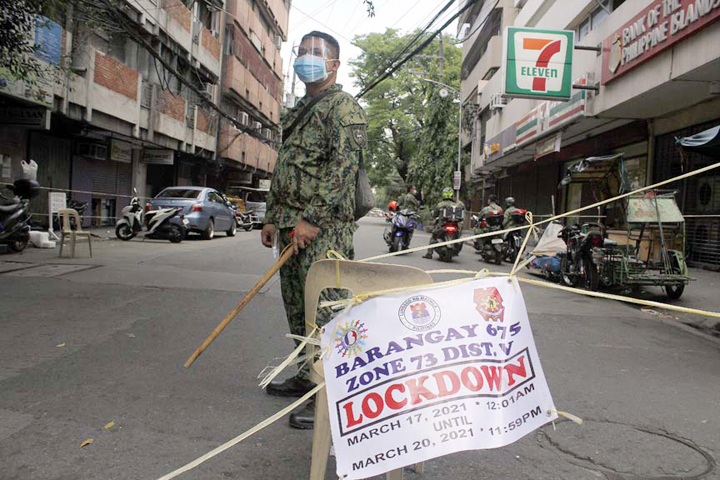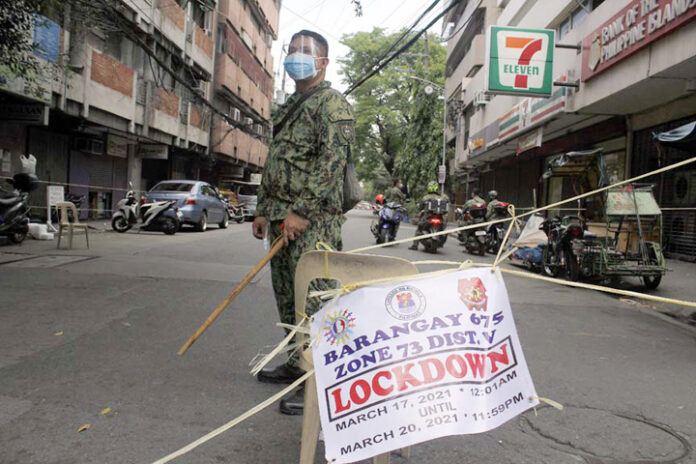
By Cai U. Ordinario and Samuel P. Medenilla
THE Philippine economy is expected to post slower growth this year compared to what the World Bank initially expected in December 2020 and the recovery will likely be toward the end of next year.
In its East Asia and the Pacific report, the World Bank said the Philippines could register a growth of 5.5 percent this year, lower than the 5.9 percent it estimated in the Philippine Economic Update (PEU) released in December.
However, higher growth at around 6.3 percent is expected for 2022 compared to the 6 percent estimate in December. Growth in 2023 is projected to be slower than 2022 at 6.2 percent.
“In the Philippines, growth is expected to recover in the medium term, contingent on an improved external environment, a successful vaccination program, and the loosening of movement restrictions,” the World Bank report stated.
The World Bank’s forecasts are below the Development Budget Coordination Committee (DBCC) targets set for this year and in 2022.
As of December 2020, the DBCC projects GDP growth to reach 6.5 to 7.5 percent in 2021 while growth is expected to hit 8 to 10 percent in 2022.
“(It’s) too early in the year to make changes,” Acting Socioeconomic Planning Secretary Karl Kendrick T. Chua told reporters on Friday. “There are 9 months of data ahead.”
Crisis factors
In a briefing on Friday, Aaditya Mattoo, Chief Economist for East Asia and the Pacific at the World Bank, said the Philippines suffered from the crisis because of the government’s failure to control the disease; the economy’s dependence on tourism; many households relied on remittances; and remains vulnerable to natural disasters.
Mattoo also said the country’s growth suffered during the pandemic due to the “tough response” of implementing a long lockdown “without delivering a commensurate benefit in terms of containment of the disease.”
The country, he said, has been less successful than other countries in the region in terms of “transitioning from a lockdown to an efficient containment strategy.”
In order to recover, the Philippines need to respond to key challenges — controlling the spread of the disease and making greater effort to “adapt to a new world” where face to face tourism will not recover soon.
“Your governments gambled on growth (thinking that) growth could lift millions from poverty. That worked remarkably well, it was a tremendous success. But as your incomes increased, I think governments must rethink the social contract. How do you equip the state to efficiently support the weaker sections of the population and stabilize the economy?” Mattoo said.
The report further stated that the Philippine government cannot delay the purchase and administration of vaccines. The World Bank said vaccines can significantly reduce the number of Filipinos infected by Covid-19.
The report said the spread of Covid-19 has not been put under control in Indonesia and the Philippines, and “rapid vaccination” should be made a priority to reduce the number of deaths and prevent health systems from becoming overwhelmed.
“The challenge for these countries is to procure and distribute sufficient vaccines and to address any vaccine hesitancy among people through effective information campaigns,” the report stated.
PHL govt: Not lockdown-obsessed
Malacañang on Friday denied it had unduly relied on “prolonged” lockdowns to contain the spread of Covid-19 instead of mass testing.
Presidential spokesperson Harry Roque said the government is no longer depending on lockdowns as it balances economic factors with public health concerns.
To prove his point, he cited the recent decision to impose a “travel bubble” in the National Capital Region (NCR) and its surrounding provinces instead of placing it under hard lockdown.
Under the travel bubble, most businesses are allowed to operate, but under additional health protocols.
“So I don’t believe there is a prolonged lockdown. In fact, our economy remain open except for some industries,” Roque said in an interview with PTV.
The country was placed under hard lockdown from March and April last year as part of the government measure to minimize the spread of infection.
It was only on May 2020, when the government finally started easing its community quarantine restrictions.
When it comes to testing, he admitted that during the initial phase of pandemic, the country has minimal testing capacity.
“We do not deny that when the pandemic started we only had one laboratory [for testing Covid-19 samples]. But in just one year, we were able to build 220 laboratories and now able to conduct over 50,000 test per day,” Roque said.
“So at first we were not able to do much [test] because we only had one [lab], but we were now slow in building testing centers. We were able to quickly build more,” he added.
Image credits: Roy Domingo
Read full article on BusinessMirror



